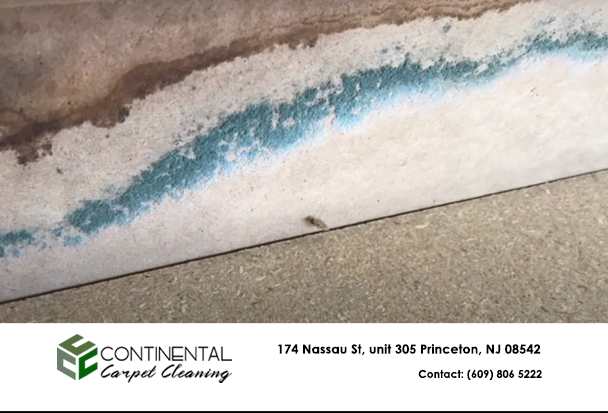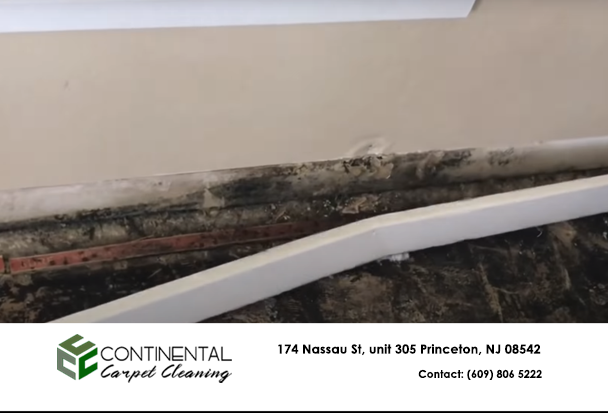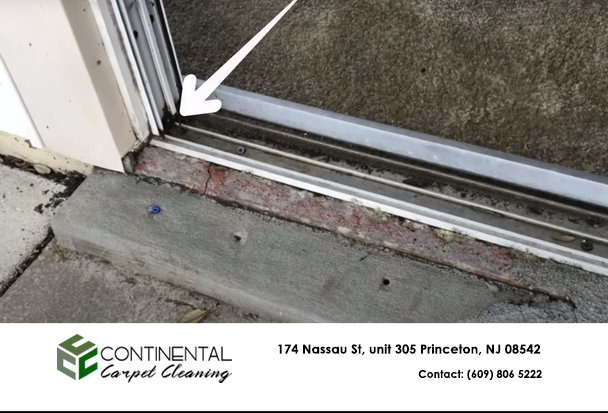Fill up the form to request for a quote or schedule for a free appointment. We’ll get back to you as soon as possible.
What’s mold? Mold is a common fungus that grows best in warm, damp environments and multiplies as microscopic spores.
It travels through the atmosphere, attaching to constructions like drywall, flooring and other materials in a house.
When it takes hold, mold in a home can multiply quickly in high humidity surroundings like basements, baths and crawlspaces.
According to the Center for Disease Control (CDC), if you see or smell mold, there are a potential health risk and you should hire a professional mold restoration firm, like Continental Carpet Cleaning, for cleanup and removal.

When miniature mold spores travel through the air and settle, under the appropriate conditions, mold or mildew can multiply rapidly, often going undetected, and become a problem inside your dwelling.
Mold can grow almost anywhere when moisture is present for an extended time period.

The effects of mold not only incorporate the potential for structural damage to your dwelling.
If you are in the market to market, undetected mold can radically lower the value of your dwelling.
Some realtors believe the presence of mould can drop the value of a house around 10 percent.
Mold can multiply on most porous surfaces where there’s damp stagnant air.
While it prefers temperatures above 60 degrees, it may also grow in cold temperatures, which is why it can be found in a refrigerator.
Most often, however, it is found in the following places:
The effects of mold not only incorporate the potential for structural damage to your dwelling. If you are in the market to market, unnoticed mold can radically reduce the value of your dwelling.
Some realtors believe the presence of mould can drop the value of a house around 10 percent.
Mold removal (also known as mold remediation), is the process of cleaning mold by eliminating mold and treating surfaces and materials that were contaminated by mold or mildew.
The methods used for removing mold will vary, depending on the sort of mold in the home and the effects of mould on the surface or substance.
Mold inspections should be done by an experienced mold specialist with formal training and expertise.
Mold inspections search for signs of mold or mildew growth, which indicates a water or moisture issue. They can include mold growth around vents, on walls or baseboards, even on your HVAC ductwork!
Mold or mildew cannot grow without water. A mould specialist will determine the moisture source and recommend options for mold removal. If the source isn’t found and eliminated, mold will return and mould remediation will have a slight long-term impact.

A mold inspection is the first step in the process of determining if you have a mold problem. Throughout a mold inspection, Continental Carpet Cleaning’s certified mold specialists, will inspect, sample and test the atmosphere in the vicinity of your house for mold detection.
A mould specialist will use a variety of mold detection methods to search for mold and mildew, identify the types of mold present and offer suggestions for cleaning mould or removing mildew.
Mold inspection is important to both the safety and health of a house and its occupants. Since mold remediation can sometimes be costly, a mold inspection performed by a mold specialist is highly advised.
Because|Since} the source of mold growth can often be concealed, you should hire a mold specialist who knows where to look and has the equipment to evaluate your situation.
A mold specialist may also look for mold in places where it could be causing structural issues, such as attics, basements and crawlspaces.
Assessing mould growth involves more than simply looking at what is visibly growing on the walls or in a corner.
Mold may be an invisible intruder, growing behind and about what you see. Such devious behavior requires inquisitive thinking.
First, understand that behind all mold growth is a water or moisture problem. Secondly, become a master of moisture — know where moisture comes from and how it gets to the house .
The ultimate goal of both of these steps is for guarantee representatives to recognize a moisture source and use its place to help locate all mold growth, not just what is immediately visible.
Mold grows by releasing its reproductive cells (spores) to the air. Spores are invisible to the naked eye, and mold can spread and grow anywhere in the house as long as moisture and oxygen are present.
Common surfaces that harbor mold growth include drywall, insulation, tile, fabrics, and wood.
Mold may not always grow in one area, so you want to find out how much contamination you are really looking at. Calculating the extent of the contamination will affect how you approach mold removal and clean up.
The goal of mold removal is to clean up mold growing within the house, and to avoid exposing homeowners to large amounts of mould.
The New York City Department of Health (NYC DOH) has developed guidelines for cleaning up mold contamination.
These guidelines are widely utilised in the construction sector and urge six levels of mold removal based on the square footage of the mould and whether or not the mold is situated within the home’s HVAC system.
Following the NYC DOH’s guidelines, available online, figure out the remediation level required.
Mold has had its 15 minutes of fame during the last few years. Though the hype has died down, mold–and mould remediation–in houses is still an important issue.
Customer complaints require home builders to have a fast action plan, both to clean up the mold problem and also to show customers that a quality home builder (you) is looking out for their health and safety and the durability of their dwelling.
There are two important things to consider mold:
1. Avoid it by doing things right the first time
2. If you do face mould, take care of it immediately.
Ensuring your guarantee team follows a procedure for mould remediation will take care of the latter.
The next measures, which may be adapted to fit within your company’s policy, serve as a basic procedure for quickly remediating mold issues.
Before you begin mold removal, document the mold situation with writing, photos and video.
The warranty team supervisor will use the documentation to develop a remediation plan, which typically answers questions like when work is slated to begin, when that work is scheduled to be completed, who will be performing the remediation, any testing that ought to be done, and if homeowners will be temporarily relocated.
In the longer term, the documentation will help handle liability for your company or point to larger trends in mold growth.
Why mold in the house is a problem: Aside from how it looks unsightly and unclean, mold has ramifications for people’s health.
Mold spores that land in a wet or damp location can begin to grow and can produce allergens, irritants, and possibly toxic substances, affecting indoor air quality and occupant health.
Continuous exposure to mold in home surroundings can cause or worsen homeowners’ pre-existing health conditions.
Remediation will always entail cleaning up existing mould while preventing exposure to oneself in addition to homeowners, in addition to preventing new growth by addressing the moisture source.
Based on your calculation of the contamination area, determine if you are working in a place up to 30 square feet (approximately the size of a complete sheet of drywall).
If so, you are going to be following the guidelines for remediation levels 1 and 2. Level 1 remediation can be used for small, isolated areas of mould around 10 square feet and Level 2 remediation covers square footage from 10 to 30 square feet.
The cleanup process is the same for Level 1 and Level 2 mould remediation and consists of these steps:
Continental Carpet Cleaning is certified for eliminating mold and our mold specialist will meet with you to discuss a strategy for mold testing and remediation.
Each Continental Carpet Cleaning technician is trained on proper mold removal / mold remediation procedures in light of the Institute of Inspection, Cleaning and Restoration Certification (IICRC) S-520.

Reference the remediation plan during the actual remediation to make sure it’s being followed. If additional mold is found during the clean up, the guarantee supervisor should update the plan.
For contamination areas greater than 30 square feet, many builders hire outside mold removal companies to carry out the clean up. In this case, you and your staff switch from really performing mold remediation to supervising a skilled contractor.
Having a general understanding of the proper procedures an outside company should be following is useful. The NYC DOH guidelines address these procedures for Level 3 contamination and above.
Just because the mold is gone and there is no dirt or dust does not mean that you are done. Your last step is to find out if your cleanup attempts have been successful.
While this last step is a judgment call, there are some options and guidelines to follow.
The EPA document, Mold Remediation in Schools and Commercial Buildings, is a excellent resource that provides guidelines for assisting you to complete your clean up efforts. Some of these guidelines include:
Based on your company and the particular details of a mould problem, further testing by an environmental testing company could be carried out following the clean up to confirm that all mold has been removed.
When it comes to mold, the important thing is to implement a comprehensive moisture management strategy. Potential liability and health issues from mould can be dramatically diminished by doing it right the first time.
Clean up must be thorough and immediate, following a procedure like the aforementioned steps. It might sound over-simplified, but the key failure in response to homeowner complaints is simply the fact that builders do not respond fast enough, or with the emphasis that the issue is potentially severe.
Minimum personal protection equipment for levels 1 and 2 remediation includes an N95 respirator, eye goggles without vents and rubber gloves that extend to mid-forearm.
Mold removal isn’t a”do it yourself job”. Mold removal requires professional substances, training and equipment.
Treating mould with household chemicals such as bleach can cause mold to spread and cause additional costly issues in your house, especially if you’re dealing with mold.
Most chemicals, including bleach, have been proven ineffective against eliminating mold in the long term. Contrary to popular belief, when you apply bleach to kill mold on a porous surface, (i.e. wood, drywall, grout, carpet, etc.) it really facilitates mold development.
The chlorine molecules stay on the surface and will kill a fraction of the mould while the water in bleach (bleach is mostly water) sinks to the substance, promoting mold growth.
This informative video provides important safety tips and proper technique for effectively eliminating mold growth in a home following a flood, and ensuring that the home is safe to be rebuilt.
New Jersey’s Leading & Trusted Professional Carpet Cleaning Service. We provide professional carpet cleaning, tile and grout cleaning, air duct cleaning, area rug cleaning and water damage restoration for your home and office.
Copyright © 2021. Continental Carpet Cleaning. All Rights Reserved.